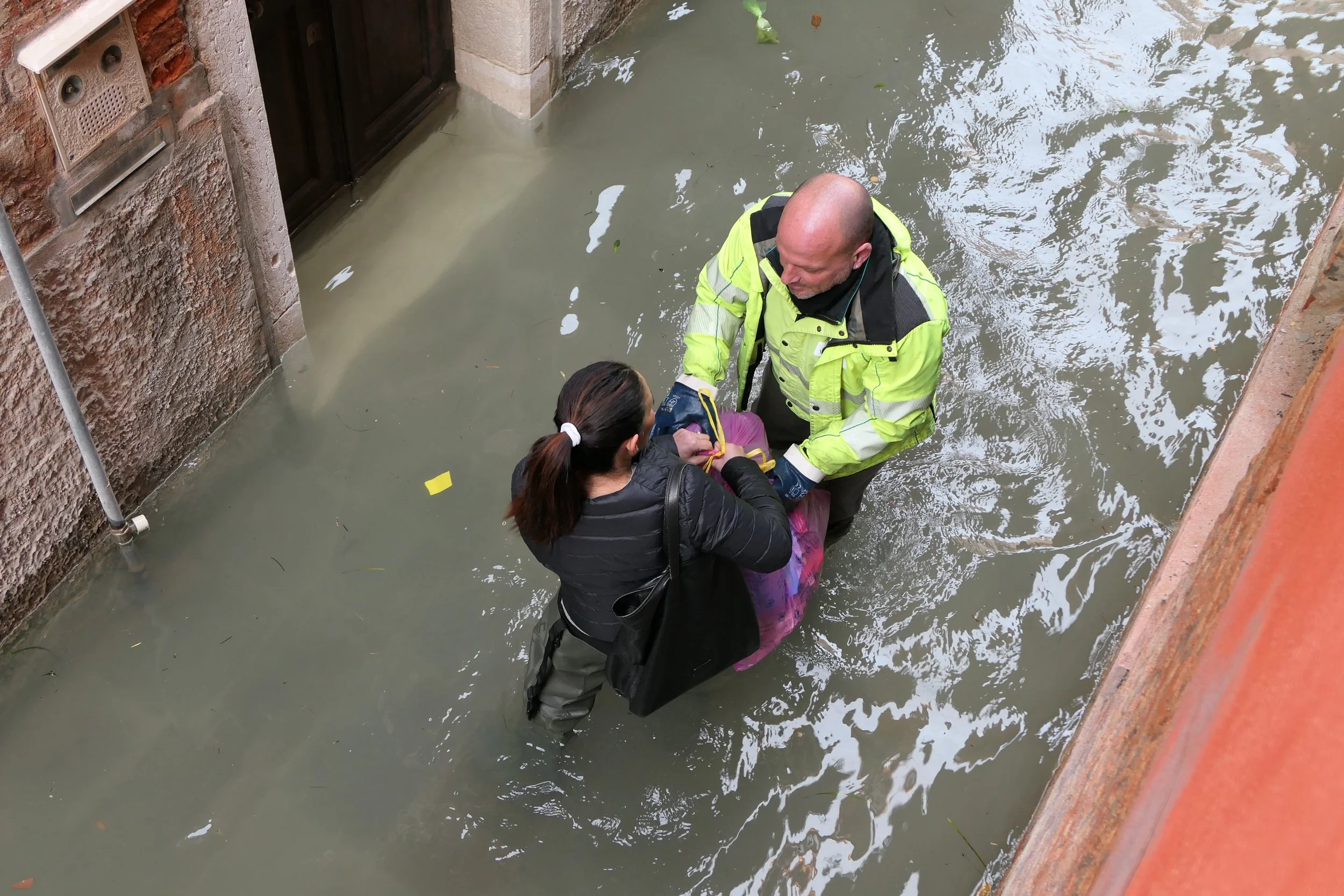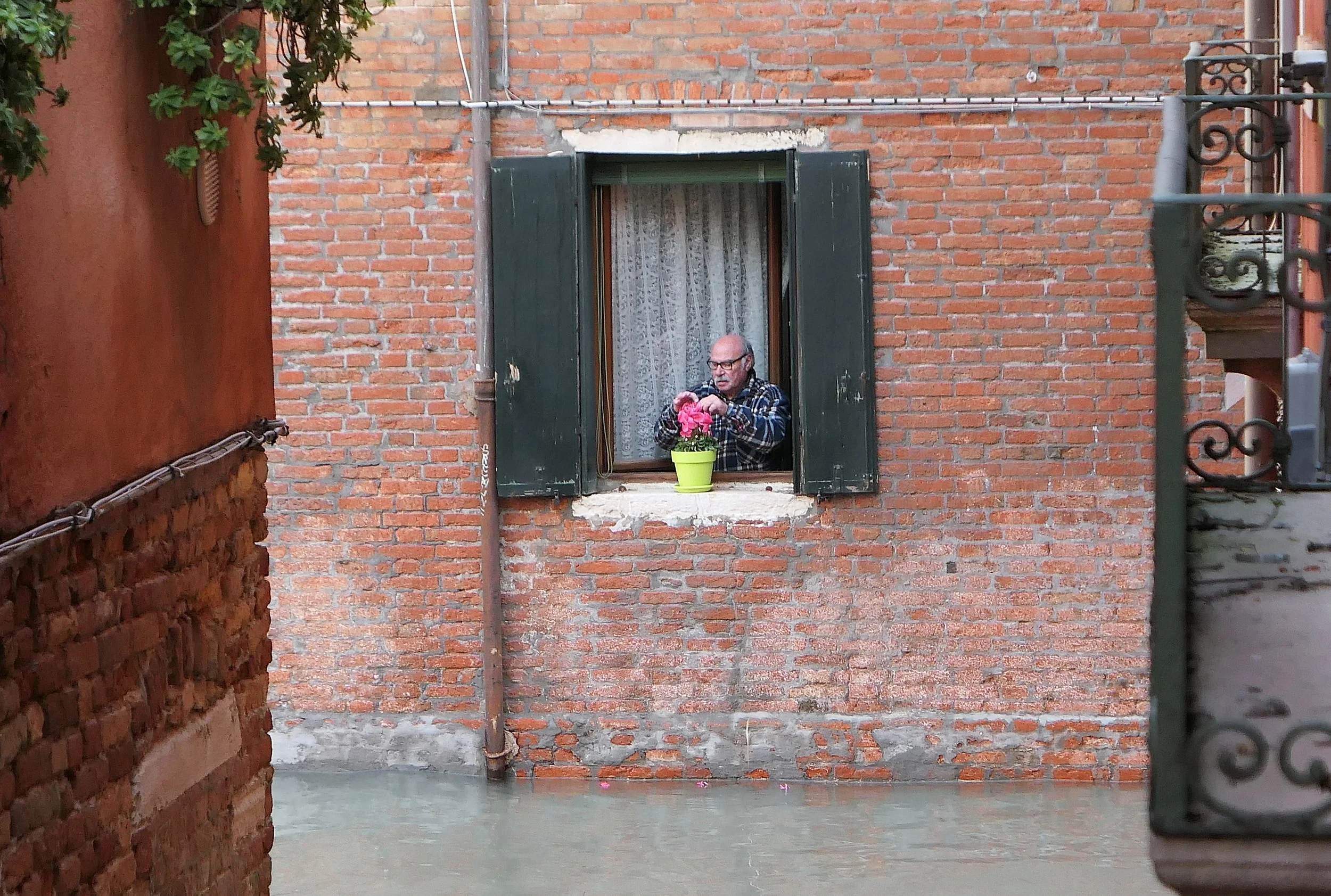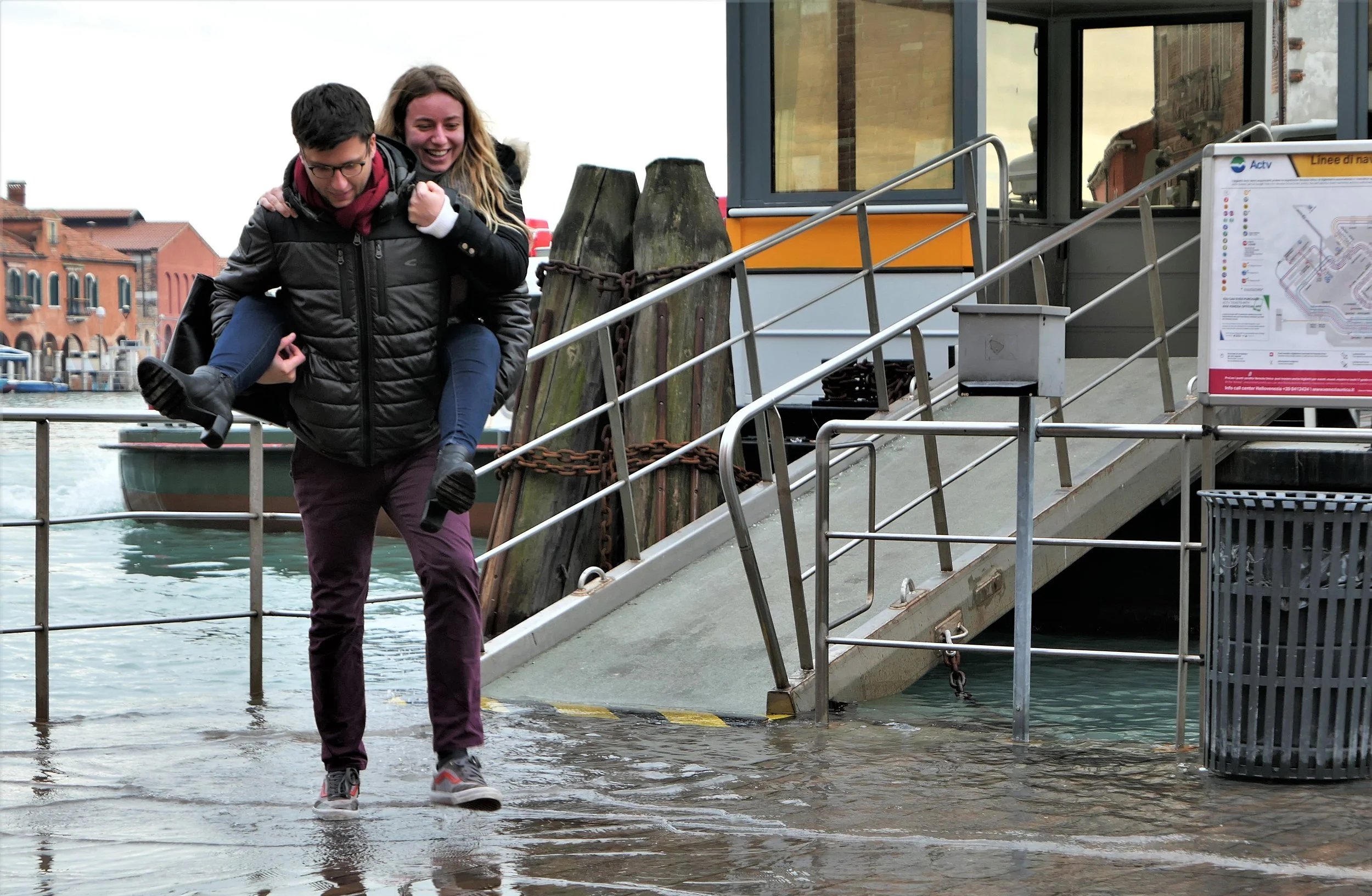Reflections on the Water
“May you live in interesting times.” There are occasions when this subtly ironic curse seems far too appropriate. I remember waking on the 13th of November, 2019, and seeing pictures on television of a reporter wading waist-deep in a flooded Piazza San Marco, and hearing that 85% of Venice was underwater. It was the second highest acqua alta event ever recorded in the city, just inches below the historic flood of 1966.
In the following days, even as Venetians began assessing their losses, the causes for the calamity were hotly debated among politicians, the press, and academics. The mayor declared that climate change and rising sea levels were to blame; geologists added that the city has been slowly sinking for centuries, due to subsidence and the tectonic subduction of the Adriatic plate beneath the Apennine plate. Hydrologists pointed out that such an unexpected and destructive tidal event required a combination of extreme factors: a full-moon tide, heavy rains, a strong storm surge pushing water north toward Venice, and “seiche oscillations” that apparently can cause the Adriatic to slosh like a bathtub.
A Touch of High Water on the Rio dei Gesuiti canal
There were many querulous voices complaining that a long-promised and increasingly expensive protective barrier to protect the lagoon from extreme tides was still not completed. (It’s called the MOSE project, an acronym of its Italian name, but irresistibly suggesting the man who parted the Red Sea.) MOSE consists of 78 huge, hollow metal barriers, filled with seawater, installed side-by-side in underwater concrete beds at the three main entrances from the Adriatic into the Venice Lagoon. When extremely high tides are predicted, the water in the barriers is replaced by compressed air, and the barriers rise on their hinges to form a long, temporary dam across each lagoon entrance. When the tide ebbs, they’re filled with water again and sink back into their concrete beds. Interesting, and quite sobering for me, because my wife and I were due in Venice in less than a month.
We went anyway, of course, and set up housekeeping in a rented flat on the Rio dei Gesuiti canal, in Cannaregio, a couple hundred yards from the Venice Lagoon. Riding the vaporetto from the train station, we saw the marks of water damage on the canal-side buildings. Luckily, our flat was on the first floor of the building, with a ground-floor lobby below. Off the lobby was a small room marked rifiuti. I looked in and saw walls full of plastic bags suspended from nails several feet above the floor.
Taking out the trash
In the small hours that night, I woke to a sound like slowly dripping water. I went to the bedroom window and pulled back the curtain. A narrow alley (ramo, in Venetian dialect) ran past our door into a little square (campietto) on the canal. A neighbouring building, across the alley, blocked the near half of the square; a streetlight lit the other half. All seemed still. I started toward the bed, but a faint gleam on the rough stones below stopped me. A small rivulet of water advanced hesitantly around the corner of the building opposite, and then hastily retreated, followed in a few seconds by another, slightly stronger one that overlapped the first. This pulsing flow slowly widened into a pool that, amoeba-like, spread itself along the alley.
I went thoughtfully to bed and awoke in the morning to see a woman in waders striding waist-deep along our alley, carrying two plastic bags toward a rubbish-collector in the campietto, whose wheeled aluminum cart was floating at his side. I knew that we had some adapting to do.
“I know of no other remedy than to cultivate one’s garden.” - Voltaire
And adapt we did. We learned to visit an official website each evening that predicted tidal highs and lows for the next day, and to plan our excursions accordingly. Rain or shine, wet feet or dry, we enjoyed a magical stay in Venice, with side trips to Bassano del Grappa and Verona, and, of course, the lagoon islands.
Chivalry is not dead on Murano Island
We left Venice the 11th of February, 2020, three days after Carnival began, amid talk of a strange virus going around. We thought little of it, and set out for Bolzano and then Innsbruck, from which we flew home on the 21st of February. On that day the first Italian Covid lockdowns began in Lombardy and the Veneto. “A few weeks at most,” we thought.
We returned to Venice in the Spring of 2023. On a sunny day at a canal-side table, with Venice at her most fetching, I asked a chatty waiter about post-pandemic business. He said the tourists were back in droves. I asked whether there had been trouble with acqua alta the last fall and winter. “Oh, no,” he said. “They’ve got MOSE working now.”
A MOSE Project service barge
Online that night I learned that the barriers had been a great success, protecting Venice from numerous high tides and stopping an even more powerful surge in November of 2022 than either the 1966 or 2019 catastrophes. Many critics, though, predict that climate change, with rising sea levels and a sinking city, will soon overwhelm MOSE, and inundate Venice.
Venice has many charms: unique and exuberant architecture, art, and music; a setting unlike any other; a long and colourful history; characters famous as Marco Polo and infamous as Casanova; and the profound quiet of her small neighbourhood canals. But there’s an inescapable air of melancholy that’s a part of her charm, too, as the crumbling foundations along the canals speak about the inevitability of decay and death. Venice, founded by fugitives on the unstable islands of a shallow lagoon, long ago, has once again defied the inevitable, and the future is not yet written.
© Text © 2024 by Joe Gartman; Photographs © 2024 by Patricia Gartman. First published in Italia! Magazine, October/November 2024





